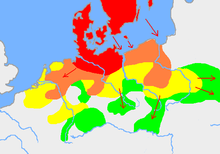| Millennium: | 1st millennium BC |
|---|---|
| Centuries: | |
| Decades: | |
| Years: |
| 250 BC by topic |
| Politics |
|---|
| Categories |
| Gregorian calendar | 250 BC CCL BC |
| Ab urbe condita | 504 |
| Ancient Egypt era | XXXIII dynasty, 74 |
| - Pharaoh | Ptolemy II Philadelphus, 34 |
| Ancient Greek era | 132nd Olympiad, year 3 |
| Assyrian calendar | 4501 |
| Balinese saka calendar | N/A |
| Bengali calendar | −842 |
| Berber calendar | 701 |
| Buddhist calendar | 295 |
| Burmese calendar | −887 |
| Byzantine calendar | 5259–5260 |
| Chinese calendar | 庚戌年 (Metal Dog) 2448 or 2241 — to — 辛亥年 (Metal Pig) 2449 or 2242 |
| Coptic calendar | −533 – −532 |
| Discordian calendar | 917 |
| Ethiopian calendar | −257 – −256 |
| Hebrew calendar | 3511–3512 |
| Hindu calendars | |
| - Vikram Samvat | −193 – −192 |
| - Shaka Samvat | N/A |
| - Kali Yuga | 2851–2852 |
| Holocene calendar | 9751 |
| Iranian calendar | 871 BP – 870 BP |
| Islamic calendar | 898 BH – 897 BH |
| Javanese calendar | N/A |
| Julian calendar | N/A |
| Korean calendar | 2084 |
| Minguo calendar | 2161 before ROC 民前2161年 |
| Nanakshahi calendar | −1717 |
| Seleucid era | 62/63 AG |
| Thai solar calendar | 293–294 |
| Tibetan calendar | 阳金狗年 (male Iron-Dog) −123 or −504 or −1276 — to — 阴金猪年 (female Iron-Pig) −122 or −503 or −1275 |

Year 250 BC was a year of the pre-Julian Roman calendar. At the time it was known as the Year of the Consulship of Regulus and Longus (or, less frequently, year 504 Ab urbe condita). The denomination 250 BC for this year has been used since the early medieval period, when the Anno Domini calendar era became the prevalent method in Europe for naming years.